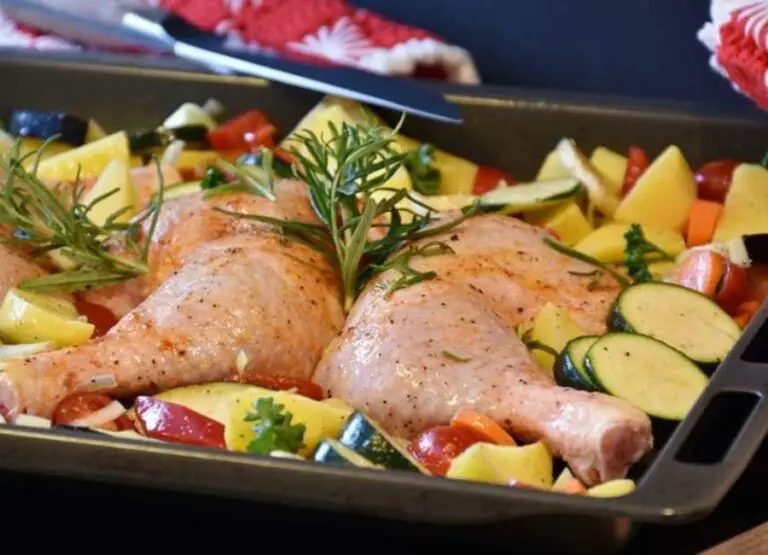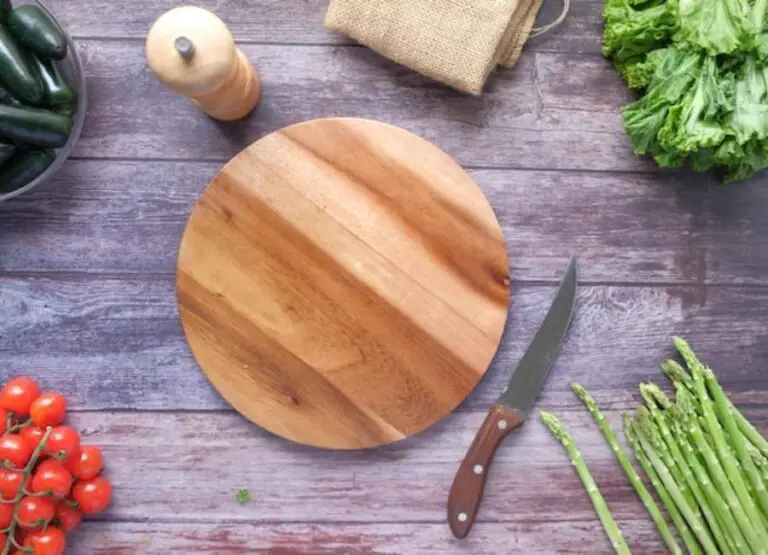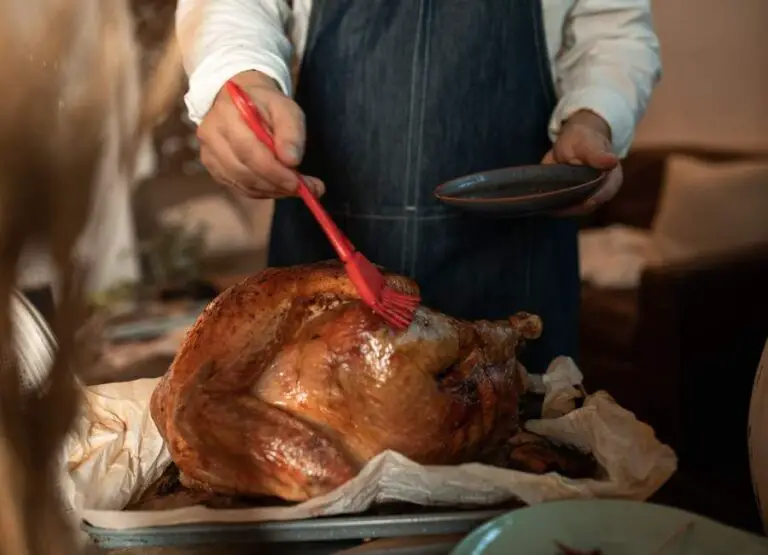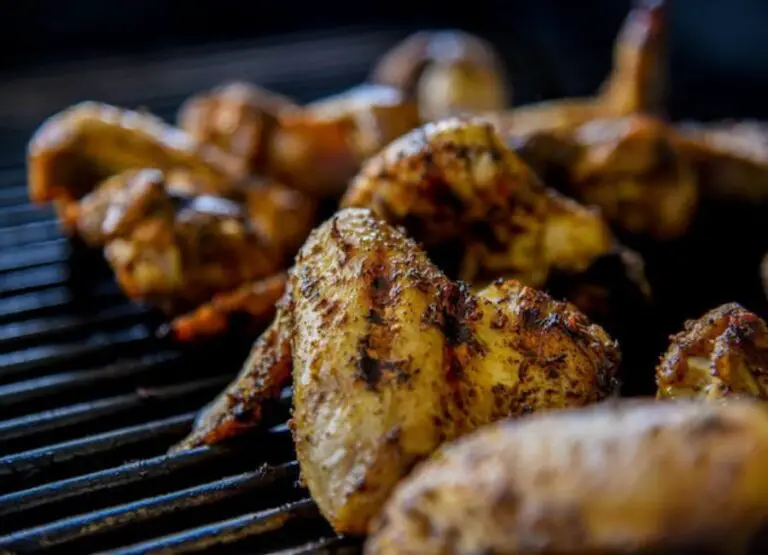Freezing Whole Chicken [A Step By Step Guide]
Today, let’s talk about a super handy tip for feeding our furry friends: freezing whole chicken.
If you’ve ever wondered how to make meal prep easier and keep your pet’s meals fresh, this is the blog post for you.
Stay tuned as we dive into the ins and outs of freezing whole chicken – it’s a game-changer for pet parents like you and me!
Freezing Whole Chicken
Here is the step-by-step process of freezing whole chicken:
Step 1: Prep the Chicken
When prepping the chicken, it’s important to start with a clean bird. Remove any giblets or innards from the cavity of the chicken.
Rinse the chicken thoroughly under cold water, inside and out, to remove any remaining debris. After rinsing, pat the chicken dry with paper towels.
This helps to remove excess moisture from the chicken, which can lead to freezer burn if left on the skin.
If you’d like to add extra flavor to the chicken, now is the perfect time to season it with your preferred herbs and spices.
You can use a dry rub, or marinade, or simply sprinkle the chicken with salt and pepper. This will allow the flavors to infuse the chicken as it freezes and thaws.
Step 2: Wrap the Chicken
Once the chicken is prepped, it’s time to wrap it for freezing. Use plastic wrap to tightly cover the chicken.
Make sure to cover it completely and seal it to prevent any air from reaching the surface of the chicken.
This airtight seal will help protect the chicken from freezer burn and maintain its quality during freezing.
Step 3: Double Bagging
To provide extra protection against freezer burn and to ensure a tight seal, place the wrapped chicken in a resealable freezer bag. Press out as much air as possible before sealing the bag.
Removing excess air will reduce the risk of freezer burn and help maintain the chicken’s quality.
For added insulation and protection, you can double-bag the chicken by placing it in another freezer bag.
Step 4: Labeling
It’s crucial to label the freezer bag with the date of freezing and any seasoning or marinade used.
This step is often overlooked but is incredibly important for food safety and quality control.
By labeling the bag, you’ll be able to keep track of how long the chicken has been in the freezer and what flavors it has.
Step 5: Freezing
Lay the wrapped and bagged chicken flat in the freezer to freeze.
Position it in a way that it won’t get squished or deformed by other items in the freezer until it’s completely frozen.
Freezing the chicken flat will help it freeze more quickly and maintain its shape.
Step 6: Thawing
When you’re ready to use the chicken, transfer it from the freezer to the refrigerator to thaw.
It’s important to thaw it slowly in the fridge to maintain its texture and flavor.
Depending on the size of the chicken, it may take a day or two to thaw completely in the refrigerator.
By following these detailed steps, you can ensure that your whole chicken freezes effectively, preserving its quality for future use. These steps not only help maintain the chicken’s flavor and texture but also contribute to food safety and hygiene.
Common Mistakes to Avoid When Freezing Whole Chicken
Freezing whole chicken can be a convenient way to always have some protein on hand, but there are a few common mistakes to avoid to ensure the best results:
1. Not properly wrapping the chicken: It’s crucial to wrap the whole chicken tightly in plastic wrap or aluminum foil to prevent freezer burn and maintain its quality. You can also use freezer bags for an extra layer of protection.
2. Forgetting to label the chicken: Trust me, you don’t want to play the guessing game when you have multiple frozen chickens in the freezer. Label each chicken with the date of freezing to keep track of its freshness.
3. Freezing the chicken when it’s already past its prime: It’s best to freeze the chicken as soon as possible after purchasing it or before its expiration date. Freezing a chicken that’s already on the brink of spoiling won’t magically revive it.
4. Not properly thawing the chicken before cooking: Plan ahead and give the chicken enough time to thaw in the fridge before cooking. This ensures even cooking and a better overall result.
5. Refreezing previously frozen chicken: Once you’ve thawed the chicken, it’s a no-no to refreeze it. This can compromise the texture and flavor, so it’s best to cook it and then freeze any leftovers.
Benefits of Freezing a Whole Chicken
Freezing whole chicken is a fantastic way to extend its shelf life and reduce food waste. It’s super convenient – you can buy in bulk when there’s a sale, then freeze the chicken for later use.
Plus, frozen chicken retains its nutritional value, so you don’t have to worry about losing any of those essential nutrients.
Another benefit is that freezing the whole chicken helps to lock in its freshness, ensuring that it stays tasty and delicious for when you’re ready to cook it.
And finally, it’s a time-saver – you can defrost the chicken when you need it, making meal prep a breeze!
Disadvantages of Freezing a Whole Chicken
Freezing whole chicken can have some drawbacks. Firstly, the texture of the chicken might change after thawing, making it less juicy and tender compared to fresh chicken.
Secondly, freezing can lead to freezer burn, which affects the flavor and quality of the meat. Additionally, frozen chicken takes longer to cook and may not retain its original flavor as well as fresh chicken.
Moreover, freezing a whole chicken requires ample freezer space, which may be a limitation for some households.
Lastly, if not properly wrapped, frozen chicken may be susceptible to absorbing other odors from the freezer, affecting its taste.
Freezing Temperature for Whole Chicken
The best temperature for freezing a whole chicken is at or below 0°F (-18°C) to ensure it stays fresh and safe for consumption. This low temperature helps to preserve the quality of the chicken and prevent bacterial growth.
It’s important to note that the freezer temperature should be consistent to maintain the quality of the chicken. Fluctuating temperatures can affect the texture and taste of the meat.
Frequently Asked Questions
Can I freeze a whole chicken?
Absolutely! Freezing a whole chicken is a great way to extend its shelf life and have it ready for future meals. Just make sure to package it properly to maintain its quality.
How should I wrap a whole chicken for freezing?
You can wrap the whole chicken tightly in plastic wrap or aluminum foil to prevent freezer burn. Alternatively, you can use airtight freezer bags or containers to keep it fresh.
How long can I keep a whole chicken in the freezer?
A properly frozen whole chicken can be kept in the freezer for up to 12 months. Just make sure to label it with the date so you can keep track of how long it’s been there.
Can I freeze a whole chicken that has already been cooked?
Yes, you can freeze a whole-cooked chicken. Just let it cool down completely, then package it securely before placing it in the freezer.
Read more about preventing salmonella in chicken.
Should I remove the giblets before freezing a whole chicken?
It’s best to remove the giblets before freezing the whole chicken. This will help prevent any off-flavors and ensure that the chicken freezes evenly.
How do I thaw a whole frozen chicken?
The safest way to thaw a frozen whole chicken is to do so in the refrigerator. It may take some time, but this method ensures that the chicken stays at a safe temperature during the thawing process.
Read more about the inflation of raw chicken packages.
Conclusion
So there you have it, folks! Freezing whole chicken is a convenient and budget-friendly way to make the most of your poultry purchases. Whether you’re meal prepping or simply want to stock up, freezing whole chicken ensures you always have a delicious and versatile protein option at your fingertips. Happy freezing, and enjoy your tasty chicken dishes for months to come!


![Are Chicken Sausages Healthy [Answered]](https://foodcreeks.com/wp-content/uploads/2023/02/Are-Chicken-Sausages-Healthy-768x555.jpg)



![How To Prevent Salmonella In Chicken [11 Hints]](https://foodcreeks.com/wp-content/uploads/2023/05/How-To-Prevent-Salmonella-In-Chicken-768x555.jpg)

